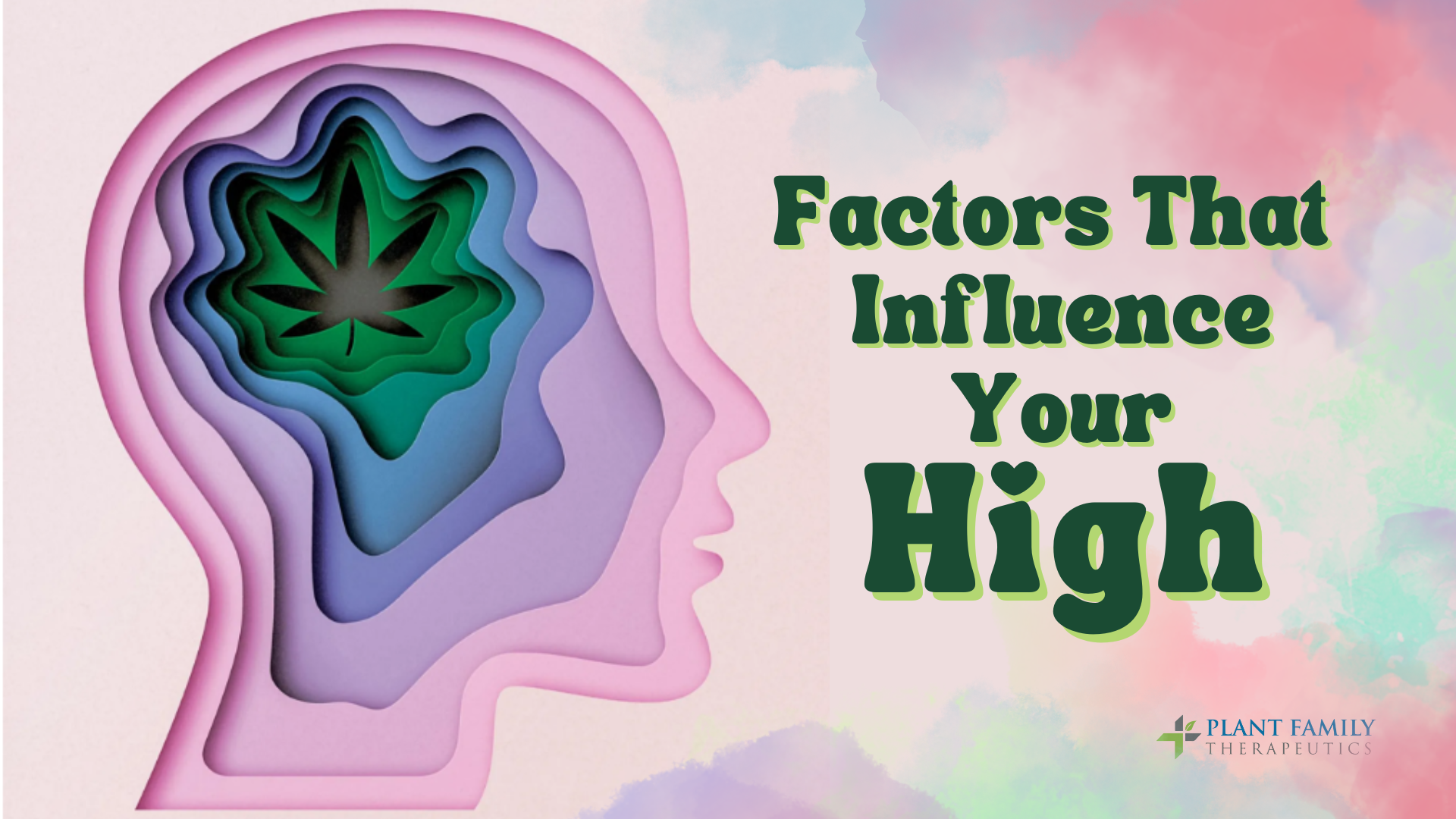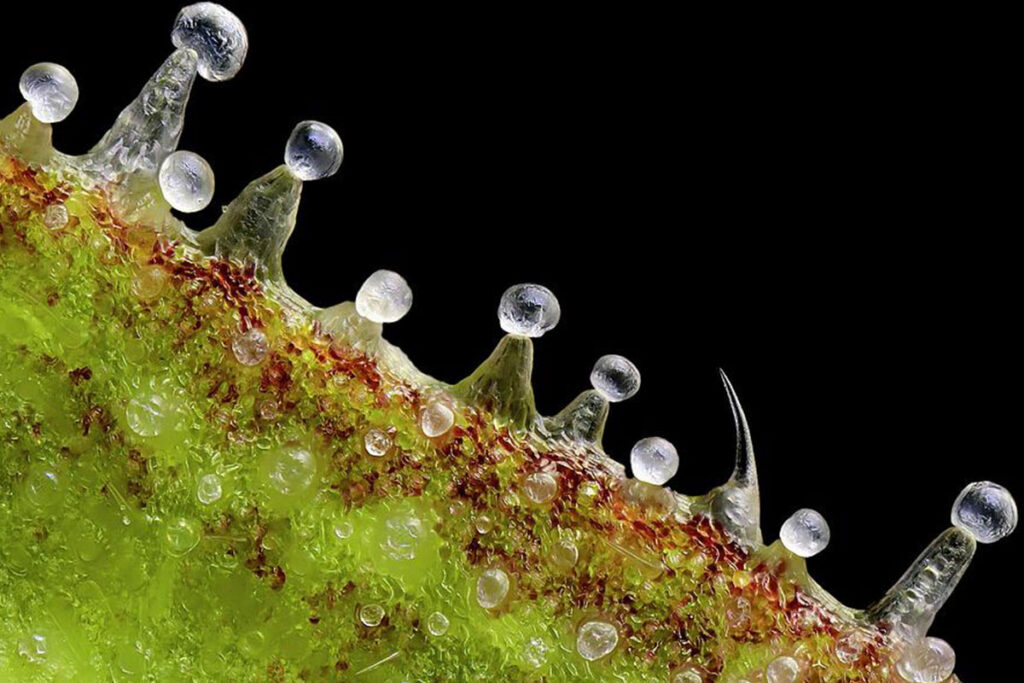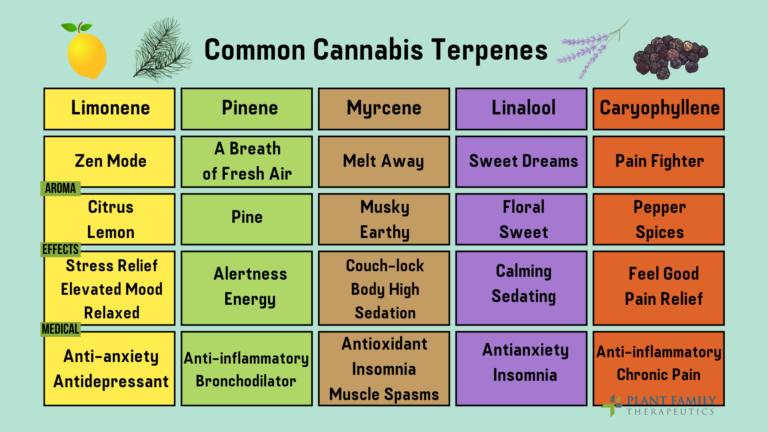This website requires you to be 21 years or older to enter. Please confirm your age below to continue.

Getting high can be an amazing experience for many since it promotes happiness and enables you to view the world from a different perspective. It allows the mind to be analytical, curious, speculative, meditative, and even spiritual. But your experience may not be the same all the time.
Ever wonder why a cannabis high can vary from one experience to the next, and if so, ever wonder what you can do about it? There are several factors that can affect how you feel when you use cannabis. Understanding what affects your high can help you to have a much more enjoyable experience and can also help you determine what provides the best results for you. In this article, we will look at several factors that can influence your high.
Set and Setting
Set refers to your mindset and it helps to be in a good mindset to start with. Yes, many cannabis consumers use cannabis to get into a good mindset, but it definitely helps if you are already there. Cannabis helps you to rid yourself of negative energy, which is a good thing but may also prevent you from getting the most out of your high. What mood you have going into your smoking session matters so try to resolve, forgive, and let go of what you can before you start. You want to enter a cannabis experience feeling light and free, not with lingering feelings of resentment and anger.
Your setting refers to more than just your surroundings, it also refers to your social and cultural surroundings. Your physical surroundings or what (or who) is immediately around you will have a huge influence on your experience. Depending on what you like, maybe a quiet room with chill music is what you desire, or walking through a forest and taking in the wilderness is more your style.
Maybe you are looking for a more social environment and sitting in a room chatting with friends is what you crave. Are you on a spiritual journey? It may be a cozy room with candles and tranquil music playing softly that resonates with you.
Whatever fits you, do it and see how your set and setting can enhance your experience.

Previous Use
Your previous cannabis experiences will influence your high in a variety of ways. First, you need to evaluate your frequency of usage and tolerance. If you smoke on a daily basis, maybe even multiple times each day, your highs will be less intense than those of occasional smokers using the same quantity. Some studies hint at CB1 receptor downregulation with prolonged THC usage, which might reduce the euphoric experience meaning – the same quantity of cannabis becomes less potent the more you use it, otherwise known as tolerance.
Your emotional reaction to cannabis is the second factor that might impact your high. Has your experience with cannabis been mostly positive? Or have you had your fair share of disappointing or anxiety-ridden experiences while high? Your answer to these questions might impact how your body reacts to cannabis each time you use it. If you’re going into the high worried about becoming anxious, it could become a self-fulfilling prophecy. However, if you’re open to the experience, your high is probably going to be enjoyable, no matter what happens.
If tolerance is your issue, adding CBD to your THC use can greatly improve your desired effects. CBD is a natural antianxiety and antidepressant, it also “carries” THC further and allows greater relief than THC alone.
How you consume
Your consumption method or how you choose to consume cannabis will affect your high. When you ingest THC it must go through your digestive system and make its way to the liver where it is broken down in what is called first-pass metabolism. This process breaks down THC to 11-hydroxy-THC, and it is said by many researchers that the effects of 11-hydroxy-THC are four times stronger than THC when it comes to the psychoactive effects. This is why edibles can feel much stronger than smoking or vaping cannabis. Edibles are known for having highs that are much longer and with a deeper psychoactive effect.
Inhaled THC undergoes a different metabolic process. Instead of passing through the stomach and then the liver, THC travels directly to the brain via the lungs, resulting in a more intense high that is much shorter in time than an edible. Vaping your THC offers more precise control, for example, you can keep the heat low to target specific terpenes and cannabinoids which allows you to experience the full spectrum of effects.
Some things to think about here, edibles can be unpredictable in their activation time. They take much longer to kick in than smoking, making it much easier to overdo it. Smoking and vaping are far easier to control, as users can simply take things toke by toke.
Biology
Your biology has a lot to do with your high. Your age and body size, as well as your metabolism (digest, breakdown, absorb), affect your high. How many receptors and endocannabinoids your body has will affect your high. Some people have a lower number of receptors while others may have an abundance and therefore it does not take too much to get them stoned. As you age your endocannabinoid receptors decrease, leaving you with fewer receptors for THC to bind to, likewise, your ability to metabolize them slows too.
Being male vs. female has its effects. A study found that men were more likely than women to report increased appetite, improved memory, enthusiasm, altered time perception, and increased musicality when high, while women were more likely than men to report loss of appetite and desire to clean when high. Men were more likely than women to report insomnia and vivid dreams during periods of withdrawal, while women were more likely than men to report nausea and anxiety as withdrawal symptoms.
Cannabis profile
The chemical profile of a strain of cannabis, and the way in which it was dried and cured, will absolutely have an effect on the high you experience.
High-THC cannabis with very little CBD will cause powerful highs but will also lead to developing a big tolerance. Strains with a more balanced THC-to-CBD ratio have been said to produce a longer-lasting high without THC side effects, while those with very little THC will have a much less dramatic effect.
When looking at your bud or flower, you can see the trichomes on cannabis plants – they are sticky, translucent glands found on the surfaces of the buds. This is where the cannabis terpenes reside.
Terpenes account for cannabis’ myriad of flavors, but they go much deeper than that. Have you ever wondered why different cannabis strains can exhibit such different effects, even though they contain the same amount of THC? This is because terpenes

are capable of working with cannabinoids to elicit different responses from the body.
No, cannabis terpenes won’t get you high. What they will do is pack a ton of crazy scents and flavors into your weed, while providing you with a range of effects on their own that modify and alter your experience. Here are a few examples of different terpenes and the effects they produce.

Food
Has this ever happened to you? You were enjoying your usual weed but felt a more intense high or less stoned. This seemed to happen either before or after you ate. Believe it or not, certain foods may alter your high. Foods with terpenes, high levels of vitamins and minerals, or omega-3 fatty acids may enhance your high. Other foods such as lemons, lemon water, and pine nuts may help to reduce the effects of your high. How to make your weed stronger? Eat healthy foods rich in vitamins, minerals, and terpenes such as sweet potatoes, nuts, broccoli, and tea.
Wrap it up
When it comes to cannabis, it’s important to be educated and familiarize yourself not only with marijuana but with its specific effects on you. Being aware of your tolerance, preferences, and mood can all help you consistently and safely achieve the high you want. If you’re seeking tailored recommendations, come in and see the medical cannabis consultant here at Plant Family Therapeutics, who can assist you with finding the best products for your individual needs.
References:
Cuttler, C., Mischley, L. K., & Sexton, M. (2016). Sex Differences in Cannabis Use and Effects: A Cross-Sectional Survey of Cannabis Users. Cannabis and cannabinoid research, 1(1), 166–175. https://doi.org/10.1089/can.2016.0010
Fattore, L., & Fratta, W. (2010). How important are sex differences in cannabinoid action? British Journal of Pharmacology, 160(3), 544–548. https://doi.org/10.1111/j.1476-5381.2010.00776.x
Russo E. B. (2011). Taming THC: potential cannabis synergy and phytocannabinoid-terpenoid entourage effects. British Journal of Pharmacology, 163(7), 1344–1364. https://doi.org/10.1111/j.1476-5381.2011.01238.x
Tan, H., Lauzon, N., Bishop, S., Chi, N., et. al. (2011) Cannabinoid transmission in the basolateral amygdala modulates fear memory formation via functional inputs to the prelimbic cortex. Journal of Neuroscience, 31,(14), 5300-5312. DOI:10.1523/JNEUROSCI.4718-10.2011
Yoo, H. B., DiMuzio, J., & Filbey, F. M. (2020). Interaction of Cannabis Use and Aging: From Molecule to Mind. Journal of dual diagnosis, 16(1), 140–176. https://doi.org/10.1080/15504263.2019.1665218